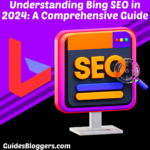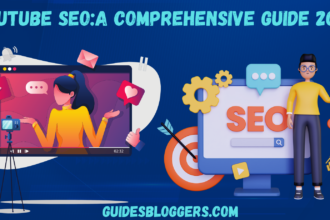In the digital age, where the internet is the go-to resource for information, products, and services, having a strong online presence is crucial. A significant part of that presence depends on how easily potential visitors can find your content. This is where Search Engine Optimization (SEO) comes into play. Among the various aspects of SEO, crafting SEO-friendly titles is one of the most important yet often overlooked factors. This guide will delve into what SEO-friendly titles are, why they matter, and how they work.
Check: Understanding Web Hosting: A Comprehensive Guide 2024
What Are SEO-Friendly Titles?
SEO-friendly titles are titles optimized to rank well on search engine results pages (SERPs) while also being appealing to human readers. These titles serve a dual purpose: they help search engines understand the content of a page and encourage users to click on the link when it appears in search results.
An SEO-friendly title is not just about stuffing keywords into a headline; it’s about creating a balance between relevance, readability, and optimization. The title should clearly reflect the content of the page, include relevant keywords, and be structured in a way that is attractive to both search engines and users.
Why SEO-Friendly Titles Matter
- First Impressions Count:
The title is often the first thing a user sees in search results. A well-crafted, SEO-friendly title can grab attention and entice the user to click on your link over others. It acts as a promise of the content they will find, setting expectations and guiding their decision-making process. - Impact on Click-Through Rate (CTR):
Click-Through Rate (CTR) is a significant ranking factor for search engines. The more users click on your link, the better your page will rank in SERPs. An optimized title can significantly boost your CTR by being compelling and relevant to the search query. - Search Engine Rankings:
While content quality and backlinks are critical factors for SEO, the title is one of the on-page elements that search engines consider when determining the relevance of a page. An SEO-friendly title helps search engines understand the topic of your page, improving your chances of ranking higher for relevant keywords. - User Experience:
An SEO-friendly title isn’t just for search engines; it’s also for users. A title that clearly reflects the content of the page helps users quickly find the information they’re looking for, enhancing their overall experience.
Key Elements of SEO-Friendly Titles
- Keyword Placement:
Keywords are the backbone of SEO, and their placement in the title is crucial. Ideally, your primary keyword should appear at the beginning of the title. This placement helps search engines quickly identify the main topic of your content. For example, if your primary keyword is “SEO tips,” a good title might be “SEO Tips for Beginners: How to Improve Your Rankings.” - Length Matters:
Search engines, especially Google, display only a certain number of characters in the SERPs (typically 50-60 characters). If your title is too long, it may get cut off, which could lead to a lower CTR. A good rule of thumb is to keep your titles concise, ensuring that the most important information is within the visible range. - Relevance and Accuracy:
The title should accurately reflect the content on the page. Misleading titles may get clicks, but if the content doesn’t match the title, users will quickly bounce back to the search results, which can harm your rankings. For example, a title like “How to Cook the Perfect Steak” should lead to a page that provides comprehensive and accurate instructions on cooking a steak, not a recipe for chicken. - Actionable Language:
Using actionable language in your title can make it more appealing. Words like “How to,” “Tips,” “Guide,” or “Best” suggest that the content will offer practical value, which can entice users to click. For instance, “10 Tips for Writing SEO-Friendly Titles” is more likely to attract clicks than “Writing Titles for SEO.” - Branding:
Including your brand name in the title can be beneficial, especially for well-known brands. This not only helps with brand recognition but also adds a level of authority and trust. However, it’s essential to place the brand name at the end of the title to keep the focus on the primary keywords. For example, “How to Improve SEO | YourBrand.” - Unique Titles for Each Page:
Every page on your website should have a unique title. Duplicate titles can confuse search engines and dilute the effectiveness of your SEO efforts. Each title should be tailored to the specific content of the page, targeting different keywords and user intents. - Engagement and Curiosity:
Titles that provoke curiosity or engagement can improve CTR. This can be achieved through questions, lists, or by highlighting something unique about the content. For example, “What Makes SEO So Important? 5 Key Reasons” can attract users interested in learning something new.
How SEO-Friendly Titles Work in Practice
To understand how SEO-friendly titles work, it’s essential to consider the process that search engines use to rank content. When a search engine like Google crawls your website, it analyzes the content, including the title, to determine what your page is about. The title tag is one of the first elements the search engine reads, and it plays a significant role in the indexing process.
1. Crawling and Indexing:
Search engines use bots (also known as spiders or crawlers) to scan the internet and index pages. When these bots encounter a page, they look at the title tag to get an initial understanding of the page’s content. If the title is optimized with relevant keywords, the bot can easily categorize the page and index it for relevant search queries.
2. Relevance to Search Queries:
When a user enters a query into a search engine, the engine’s algorithm quickly searches through its index to find the most relevant pages. An SEO-friendly title that includes keywords matching the query will have a better chance of appearing in the search results.
3. User Behavior and Feedback:
Search engines also consider user behavior when ranking pages. If users frequently click on your page and spend time on it, this indicates to the search engine that your content is valuable and relevant, which can improve your rankings. Conversely, if users click on your page but quickly return to the search results (a behavior known as “pogo-sticking”), it can negatively impact your rankings. A well-crafted title can help set accurate expectations and reduce bounce rates.
Crafting the Perfect SEO-Friendly Title: Best Practices
- Research Keywords:
Start by researching the keywords relevant to your content. Use tools like Google Keyword Planner, Ahrefs, or SEMrush to identify high-volume, low-competition keywords. This research will inform the language and structure of your title. - Consider Your Audience:
Understand your target audience and what they’re searching for. Tailor your title to meet their needs and interests. For example, if your audience is looking for beginner-friendly content, make sure your title reflects that. - A/B Testing:
If possible, conduct A/B testing with different titles to see which one performs better. This can be done through tools like Google Optimize or by analyzing the CTR in your Google Search Console. - Avoid Keyword Stuffing:
While keywords are important, avoid the temptation to overstuff your title with them. Keyword stuffing can make your title appear spammy and reduce its readability. Search engines are also sophisticated enough to penalize this practice. - Update Titles Regularly:
SEO is not a one-time task; it requires ongoing optimization. Regularly review and update your titles to ensure they remain relevant and competitive as search trends evolve.
Conclusion
SEO-friendly titles are a vital component of any successful SEO strategy. They help search engines understand your content and attract users to your page, improving your rankings and driving more traffic. By focusing on keyword placement, relevance, readability, and engagement, you can craft titles that not only rank well but also resonate with your audience. Remember, the goal is to create a title that is both search engine-friendly and user-friendly, striking a perfect balance that leads to better visibility and higher click-through rates.











